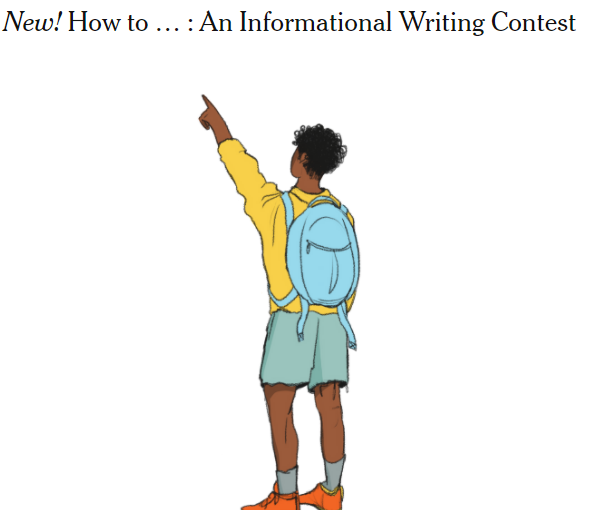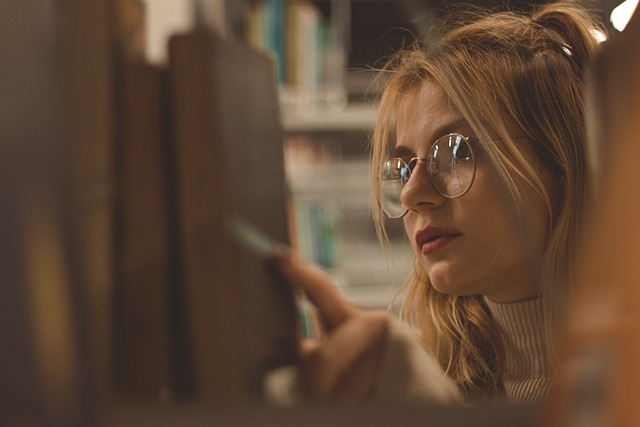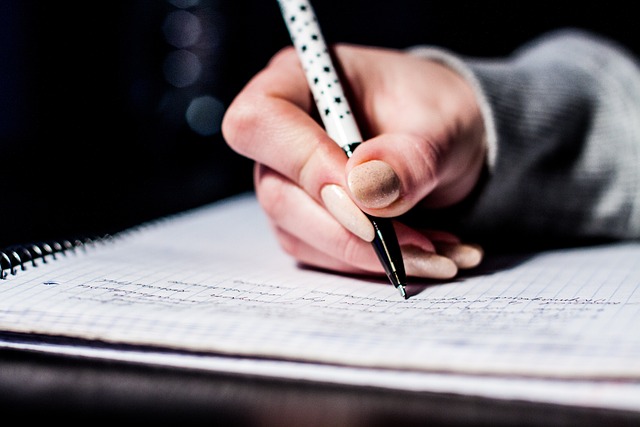《纽约时报》将于2024年首次开设信息写作比赛,以《纽约时报》杂志长期运行的Tip专栏为例,编写一篇不超过400词的“如何……”的文章。
竞赛允许同学们自行选择感兴趣的主题,你可以解释任何你喜欢的东西。但是必须在你的文章中找到、采访和引用一位关于这个主题的专家的话。
时间:2024年1月10日—2024年2月14日
更多细节将很快发布,请持续关注我们,但在此之前,请查看以下细节:
概述
所有信息新闻都需引用专家和利益相关者的话。这是记者的工作——从各种来源收集信息,以便最终的文章具有权威性和平衡性。
如果你正在写自己的文章,也许是为了我们的比赛,你可能想知道,你如何选择合适的人来引用?您如何使用他们给您的信息?即使你不像记者那样进行现场采访,任何基于研究的写作任务都需要你学习如何编织你在书籍或其他来源中找到的信息。那么,您何时引用,何时转述?您如何无缝地完成这两件事?
在本期的导师文本中,我们选择重点介绍每周在杂志上出现的简短、引人入胜的提示专栏。这就是为什么它如此有用:
它是按照实用且引人入胜的公式编写的,如果您参加我们的 STEM 写作比赛,欢迎您遵循。
该栏目通常不超过400字。由于我们的比赛只给你500个单词,Tip可以告诉你如何在短短几段中传授大量有趣的信息。
发现模式
从“Tip”栏中选择三篇文章,以您认为最感兴趣的文章为准。
阅读完三个问题后,请回答以下问题:您对提示列的结构有何了解?也就是说,读者可以期望在每个版本中找到哪些可预测的元素?
1.检查三篇简短的导师文本
如果你通过上面的练习,你无疑会注意到这个模式:
所有提示文章的第一行都是专家的引述。
现在,回答以下问题:
作者在这些专栏中引用了谁?你认为作者为什么选择它们?你认为他们是很好的信息来源吗?
仔细观察作者何时选择引用专家的话,以及她何时转述他们给她的信息。有什么区别?你认为她为什么选择引用她所做的台词?从文章中举一些例子来解释你的推理。
你注意到她在引号中的工作方式吗?她如何介绍它们,使它们有意义?
最后,仔细查看每件作品开头和结尾的引号。您如何描述差异?如果报价被翻转,它们会起作用吗?你在这些文章的中间段落中找到的任何引文呢?对于 Tip 列的结构以及引号如何构建该结构,您一般可以做出哪些观察?
2.列出可靠的来源
尽可能长地列出你可能咨询的所有人和地点,以获得该问题的完整答案,然后与他人分享您的列表。
3.引用专家的任何信息文章的相关问题
翻看这件作品。有多少来源,无论是个人还是机构,都被命名?有多少被引用,有多少被引用为释义信息的来源?它们是如何被引用的?这些来源为作品增添了什么?
您认为作者为什么选择这些来源?他们看起来有多可靠?你怎么知道?
专家的信息是如何融入作品的?如何引入报价?释义如何使信息的来源清晰?
缺少哪些观点(如果有的话)?这个人可以采访哪些专家或利益相关者来获得这些观点?为什么?
你还注意到或欣赏这件作品的什么?它可能对你的写作有什么好处?
扫码获取更多赛事详情!









